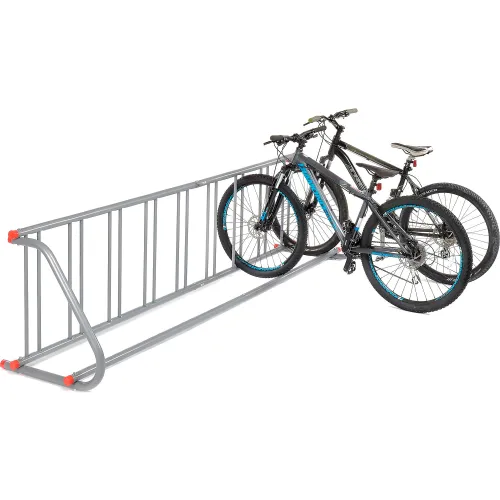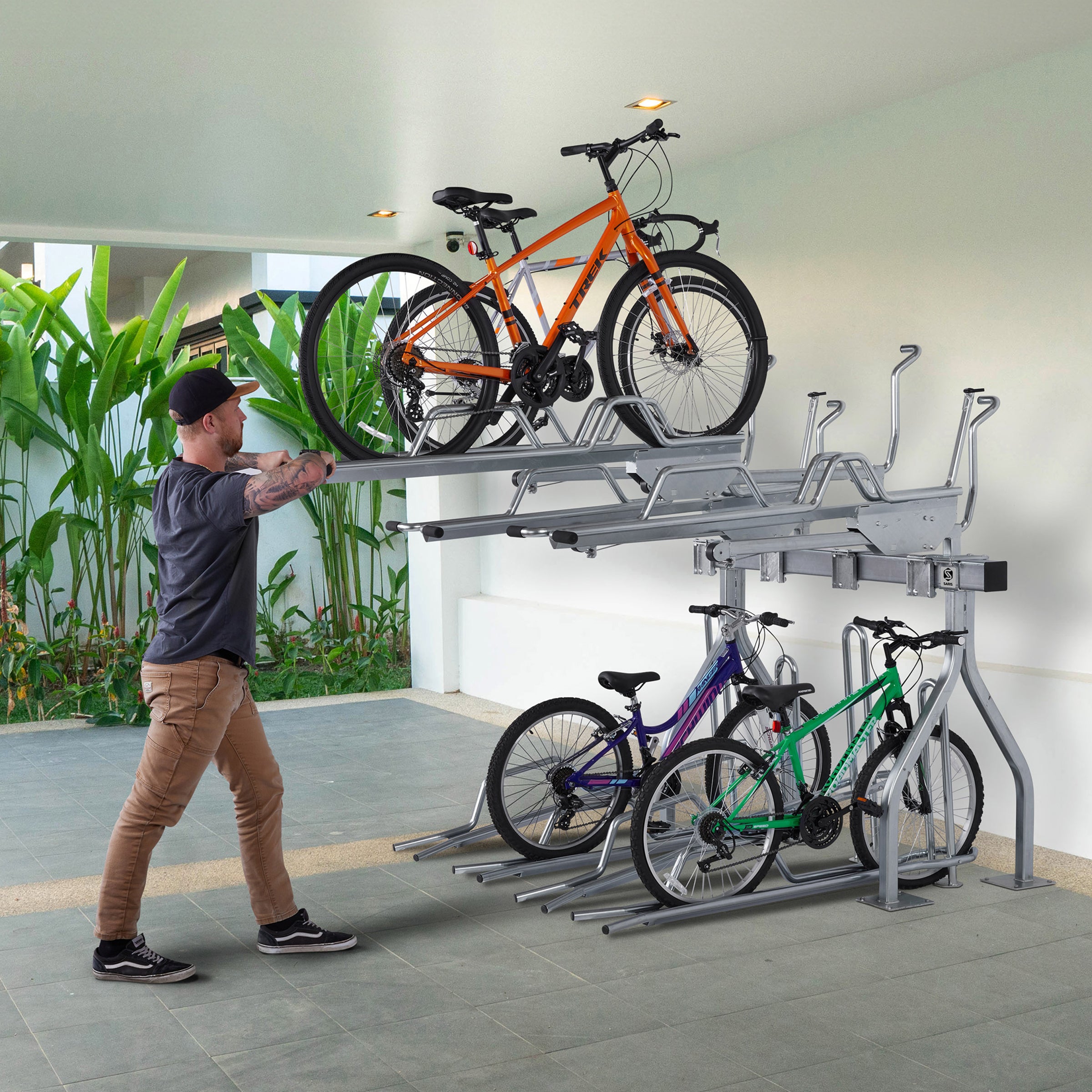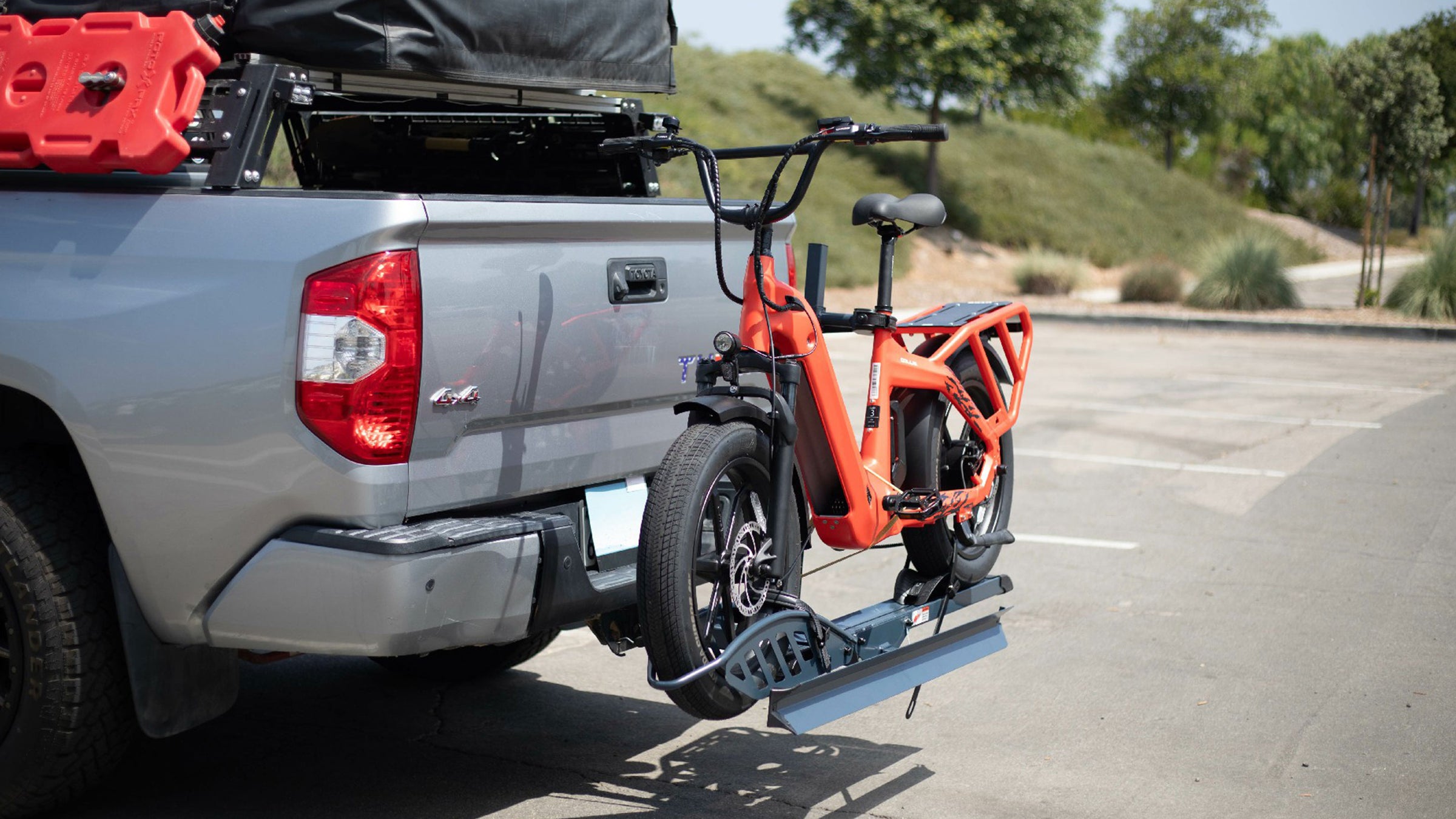Safety Checklist Before Traveling With a Hitch Bike Rack
Wiki Article
Explore the Different Kinds of Bike Shelf and Their Practical Applications for Cycling Fanatics
The selection of bike Racks available today satisfies the varied demands of cycling enthusiasts. From freestanding to wall-mounted alternatives, each design uses unique benefits for storage and transport. Portable Racks additionally provide flexibility for those on the relocation. Picking the suitable type requires mindful factor to consider of particular requirements. Comprehending these aspects can make a substantial difference in both benefit and safety for bicyclists. What are the key considerations when selecting a bike shelf?Recognizing Bike Shelf Enters
Various sorts of bike Racks deal with the varied needs of bikers. Amongst the most common are freestanding shelfs, usually discovered in metropolitan areas, which permit numerous bikes to be secured in a compact room. Wall-mounted Racks offer those with limited flooring area, giving a reliable remedy for home storage space. In addition, mobile bike shelfs, designed for ease of transportation, attract bicyclists who often travel.
Hitch-Mounted Bike Racks
Hitch-mounted bike Racks provide a practical service for carrying bicycles, however understanding their setup procedure is necessary for efficient usage. Customers need to additionally think about the weight capacity of these Racks to guarantee security and stability while traveling. Furthermore, compatibility with different lorry kinds plays a considerable function in figuring out the appropriate shelf for private needs.Installation Refine Introduction
When choosing a hitch-mounted bike shelf, recognizing the installment procedure is vital for assuring safety and comfort. The user must confirm compatibility in between the shelf and the car's hitch receiver. A lot of Racks are created for either 1.25-inch or 2-inch receivers. After selecting the proper shelf, the installation begins with protecting the shelf right into the drawback receiver and tightening the hitch pin or screw to avoid movement. Correct placement is essential to establish the rack does not block tail lights or certificate plates. As soon as installed, it is recommended to inspect for security by using minor stress to the shelf. Following the supplier's instructions will guarantee a successful setup, promoting a secure cycling experience when traveling.Weight Capability Considerations

Compatibility With Automobile Types
Selecting the right bike shelf includes verifying compatibility with various lorry types. Hitch-mounted bike Racks are developed to connect to the rear drawback receiver of an automobile, making them ideal for a variety of trucks, autos, and suvs. It is essential to examine the drawback class and weight capacity to verify a proper fit. The majority of hitch-mounted Racks are suitable with 1.25-inch and 2-inch receivers, suiting cars geared up with ideal hauling capacities. Additionally, customers ought to consider their lorry's height and layout, as some Racks may block rear gain access to or call for additional clearance. Eventually, understanding lorry requirements verifies that cycling fanatics can securely deliver their bikes without jeopardizing security or functionality.Trunk-Mounted Bike Racks
Trunk-mounted bike Racks supply a useful option for cyclists seeking an efficient method to carry their bikes. Recognizing the setup procedure is important for suitable usage, as improper configuration can bring about security concerns. Additionally, thinking about the weight ability of these Racks guarantees that they can securely hold the bikes without risk of damage or failure during transit.Setup Process Summary
Many cycling enthusiasts appreciate the comfort of trunk-mounted bike Racks for their convenience of usage and flexibility. The installation procedure normally begins with familiarizing and unboxing the rack oneself with its elements. The majority of Racks feature flexible bands and hooks created to safeguard them to the car's trunk or hatch. Users must confirm the shelf is located properly, straightening it with the lorry's shapes for security. Adhering to the maker's directions, the straps are then tightened up firmly, assuring a snug fit. It is essential to check that the shelf does not obstruct the automobile's lights or permit plate. Validating that all connections are secure prior to packing bikes is essential for risk-free transport. Appropriate installation boosts both security and performance during biking journeys.Weight Capability Considerations
When taking into consideration a bike shelf for delivering bikes, weight capacity is an important variable that can not be ignored. Trunk-mounted bike Racks usually carry weight restrictions that vary relying on the version and layout. It is essential for customers Hitch Bike Rack to examine these requirements to assure they do not exceed the suggested weight, as doing so can compromise both security and vehicle stability. The majority of trunk-mounted Racks can support a couple of bikes, with a mixed weight capacity varying from 70 to 120 extra pounds. Bikers ought to additionally consider the weight of their bikes, specifically if they possess much heavier versions like electric bikes. Appropriately matching the shelf's weight capacity with the bikes' weights assures a secure and protected transport experience.Roof-Mounted Bike Racks
Roof-mounted bike Racks supply a streamlined solution for carrying bikes, providing bicyclists with the benefit of taking full advantage of freight space. These Racks are designed to hold bikes safely atop the lorry, enabling easy access to the rear of the automobile and stopping blockages to the certificate plate or tail lights. They are excellent for people that regularly take a trip with their bikes, as they can suit numerous bike styles and sizes.Installation generally entails affixing the shelf to the automobile's crossbars, making sure a steady and secure fit. Roof-mounted Racks are lightweight and usually wind resistant, which can cause boosted gas efficiency compared to other kinds of shelfs. Users ought to consider the height of their vehicle when loading and unloading bikes, as well as potential obstacles when getting in garages or low-clearance areas - Bike Rack. Generally, roof-mounted bike Racks use a reliable and flexible option for enthusiastic bikers on the move
Wall-Mounted Bike Racks
Wall-mounted bike Racks provide a reliable service for cyclists seeking to take full advantage of minimal area while firmly storing their bicycles. These Racks are ideal for city dwellers or those with little garages, as they boost bikes off the ground and utilize upright space. Made from strong materials, wall-mounted choices can accommodate various bike types, consisting of mountain, hybrid, and road bikes.Installation is straightforward, allowing users to mount them in garages, cellars, and even exterior rooms. Lots of layouts allow for one or multiple bikes, making them flexible for private or family use. Furthermore, some wall-mounted Racks included incorporated locks or protection functions to hinder burglary, boosting comfort for bicyclists.
Portable Bike Racks
Mobile bike Racks offer cyclists a hassle-free and versatile option for delivering their bikes. These Racks are created for very easy setup and removal, making them suitable for those that need to often switch between locations or cars. Commonly lightweight and compact, portable bike Racks can be easily stored in a trunk or garage, easing the concern of permanent installations.There are various kinds of mobile bike shelfs, including hitch-mounted, trunk-mounted, and roof-mounted options, each dealing with various vehicle types and cyclist preferences. Hitch-mounted Racks offer stability and ease of access, while trunk-mounted Racks are commonly extra budget-friendly and functional. Roof-mounted Racks are great for taking full advantage of freight space yet might require some lifting.
Selecting the Right Bike Shelf for Your Demands
Exactly how can one figure out the most effective bike shelf to match their details biking demands? Determining the appropriate bike rack involves reviewing several elements. First, one should take into consideration the kind of vehicle made use of for transport, as Racks are made for various placing systems, such as roofing system, drawback, or trunk. Next off, the variety of bikes to be carried is important; some Racks fit only one, while others can hold several bikes efficiently. Furthermore, figuring out the weight and frame style of the bikes is considerable, as particular Racks are better fit for larger or distinctly shaped bicycles. Intended use must be taken right into account; frequent tourists may prefer a more mobile alternative, while periodic customers could prioritize simplicity and simplicity of setup. By thoroughly considering these considerations, people can select a bike rack that satisfies their needs and enhances their cycling experience.
Frequently Asked Concerns
Can Bike Racks Accommodate Different Bike Sizes and Styles?
Bike Racks differ in layout, enabling holiday accommodation for different bike sizes and styles. Some Racks feature flexible components, while others are especially tailored for specific bicycles, making sure safe storage space and simple access no matter of the bike's specs.Exactly how Do I Properly Protect My Bike on a Rack?
To correctly secure a bike on a rack, one should assure the framework and wheels are firmly attached making use of locks or straps, checking for stability and preventing activity during transportation to avoid damages.Are Bike Racks Easy to Install and Eliminate?
Bike Racks vary in installment complexity, yet numerous are developed for user-friendliness. Detachable designs commonly offer uncomplicated arrangement and removal, while permanent setups may need tools and even more time, depending upon the details design.
What Materials Are Bike Racks Normally Made From?
Bike Racks are commonly made from materials such as plastic, aluminum, and steel. Hitch Bike Rack. Steel offers sturdiness and stamina, while light weight aluminum supplies light-weight mobility. Plastic choices are commonly developed for simplicity of use and costDo Bike Racks Affect Fuel Efficiency When Driving?
The concern of whether bike Racks affect fuel performance when driving is significant. Studies suggest that bike Racks can boost wind resistant drag, possibly causing lowered gas effectiveness, particularly at greater rates or with added weight.After selecting the ideal shelf, the setup starts with safeguarding the rack right into the drawback receiver and tightening the hitch pin or bolt to protect against activity. Roof-mounted Racks are light-weight and often wind resistant, which can lead to improved fuel efficiency compared to other types of racks. Hitch-mounted Racks offer security and ease of access, while trunk-mounted Racks are often more versatile and affordable. Next off, the number of bikes to be lugged is necessary; some Racks fit only one, while others can hold several bikes effectively. Bike Racks differ in style, allowing lodging for different bike dimensions and designs.
Report this wiki page